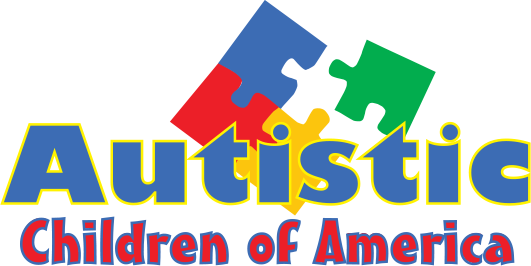Autism Facts To Know
- 50% of individuals with autism are nonverbal throughout their life span; another 20% may present as nonverbal when highly stressed.
- 30 – 40% of individuals with autism will develop epilepsy or some other seizure disorder during adolescence.
- Individuals with autism can’t be identified by appearance. They look the same as anyone else. They’re identified by their behavior.
- When restraint is necessary, be aware that many individuals with autism have a poorly developed upper trunk area. Positional asphyxiation could occur if steps are not taken to prevent it: frequent change of position, not keeping them face down. Individuals with autism may continue to resist restraint.
- Some individuals with autism do not have a normal range of sensations and may not feel the cold, heat or pain in a typical manner. In fact they may fail to acknowledge pain in spite of significant pathology being present. They may show an unusual pain response that could include laughter, humming, singing and removing of clothing.
- Speak in short clear phrases “get in,” “sit down,” “wait here.” An individual with autism may take longer to respond to directives, and that can be because they don’t understand what’s being demanded of them, or even just because they’re scared; they may not be able to process the language and understand a directive when fearful.
- Individuals with autism may engage in self stimulatory behavior such as hand flapping, finger flicking, eye blinking, string twirling, rocking, pacing, making repetitive noises or saying repetitive phrases that have no bearing on the topic of conversation. This behavior is calming to the individual, even if it doesn’t appear calming. They may repeat something you said or something they heard over and over and over again. This is called echolalia and can be calming to the individual. If these behaviors are NOT presenting as a danger to themselves or others it is in your best interest not to interfere with it. Allow THE BEHAVIORS to continue as long as the individual is safe and is safe to be around. Trying to stop the behaviors will increase anxiety and may cause the individual to act out aggressively.
- Autism is also known by other names, ASD – Autism Spectrum Disorder, Asperger’s Syndrome, PDD- Pervasive Developmental Delay, PDD NOS- Pervasive Developmental Delay Not Otherwise Specified and of course autism.
Difficulties with rescue
- Force entry will be most likely. Families often need to lock doors including interior doors for safety reasons. Some families need to lock kitchen, bedrooms or bathrooms in the night.
- Barred, nailed or locked windows. This is done to keep individuals from trying to elope or wander.
- Plexiglas or Lexan windows may be in place. This makes access a problem for rescue.
- Fences with locked gates present an access problem for rescue. Think bolt cutters.
- Adults with autism are just as likely to hide, like children, in a fire situation. Closets, under bed and behind furniture checks need to be done during search and rescue.
- When moving an individual with autism quickly, wrap them in a blanket with their arms inside. This will give them a secure feeling and may help to calm them during a rescue. This will also prevent thrashing while trying to escape an emergency situation.
- Rescue from heights: EXTREME CAUTION should be used with any rescue from heights. An aerial tower or platform would be the easiest way to remove an individual with autism. This person may aggress towards the rescuer during this operation. ALWAYS make sure you are secured before you attempt to rescue the individual.
- These individuals are a bolt risk after rescue. Firefighter must stay with the individual with autism.
Other Issues
- Frequently families with individuals with autism must use systems that may appear to be neglectful or abusive. Always be sure to investigate with a caseworker that is familiar with the family and the individual if you are unsure of the situation. Families may need to use only a mattress on the floor instead of a bed because the individual may present behaviors that are dangerous if certain furniture is accessible. Such as an individual who may wedge his/her head between a wall and furniture as a result of a sensory need. Fire fighters may find bedrooms without dressers or other furniture, or that furniture may be bolted to the wall. This may be because the individual climbs or throws furniture.
- There may be beds without any blankets, sheets, pillows and such during the day. Some families teach bed making and stripping skills by doing it each night and morning. It may take years for this skill to be mastered.
- There may not be any decorations in the room or curtains on the windows. This may be due to destructive behavior or Pica (eating non food items) as opposed to neglect.
- Feces smearing is not uncommon and may occur daily.
- This is not to say that families who have individuals with autism are never neglectful or abusive but many methods to prevent injury provide for safety or assist in cleaning may look like something else. Firefighters are required reporters if they find anything that looks like abuse. I would ask that before reporting they check with a case manager or school official to be sure that there isn’t another reason for what they’ve seen. It is a tragedy for a family who is doing a good job with a very difficult situation to have to also defend it in court. It is very difficult for these children to be removed from their home environment if it is meeting their needs just because it looks odd.
Citations:
Information in this section is based on source material drawn from:
“Autism 101 for Fire and Rescue Personnel.” Autismlink.com. N.p., n.d. Web. 30 July 2012. <http://www.autismlink.com/pages/emergency_firerescue/>.
